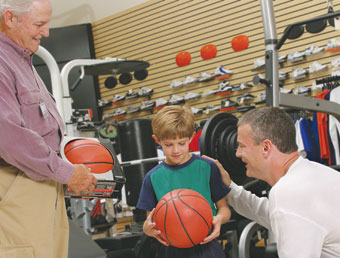Communication Milestones
 To function more easily in our society, we must be able to hear and communicate effectively. Despite all of the technological advances, many aspects of life remain profoundly difficult for a child with a condition or disorder that affects hearing, voice, speech and/or language. Difficulty in hearing and communicating inhibits the ability to understand and learn in traditional ways and may isolate the child from family, friends, classmates and teachers. As the child matures into adulthood, communication problems are likely to affect emotional and social life and compromise educational and job opportunities.
To function more easily in our society, we must be able to hear and communicate effectively. Despite all of the technological advances, many aspects of life remain profoundly difficult for a child with a condition or disorder that affects hearing, voice, speech and/or language. Difficulty in hearing and communicating inhibits the ability to understand and learn in traditional ways and may isolate the child from family, friends, classmates and teachers. As the child matures into adulthood, communication problems are likely to affect emotional and social life and compromise educational and job opportunities.
Each child is different
Some babies are born with health issues that affect communication, while others may begin to experience them as they grow older. It’s important to know what to expect as your baby grows so that you can identify any potential hearing and communication problems as early as possible. This increases the opportunity to address any problems through intervention and treatment, especially during the first few years of life, which are a critical period for acquiring language.
Children vary in their development of speech and language skills, but they follow a natural progression for mastering them. The National Institute on Deafness and Other Communication Disorders has developed a checklist of milestones for the normal development of speech and language skills in children from birth to 5 years of age. The checklist presents the average age by which most babies accomplish a variety of early speech and language skills. Typically, a child may not accomplish all the items in an age category until he or she reaches the upper age in the age range.
Using the checklist. Find your child’s age range on the form, and check YES or NO for each item. At your child's next appointment, tell the doctor about any items that had a NO answer and/or any indications that your child may have trouble hearing or communicating. Your input and this checklist will help doctors and other health professionals determine if your child is on track or needs extra help.
Encouraging Communication Skills
 From the moment of birth, fill your baby's waking hours with singing, talking, music and the unique sounds of the environment. Sing to your baby as you cuddle. Even when the baby is too young to understand, talk about what you are doing and what you see. Imitate common sounds like a train whistle or a car horn. Laugh together as often as possible. Here are some other tips for encouraging speech, language and hearing development in little ones:
From the moment of birth, fill your baby's waking hours with singing, talking, music and the unique sounds of the environment. Sing to your baby as you cuddle. Even when the baby is too young to understand, talk about what you are doing and what you see. Imitate common sounds like a train whistle or a car horn. Laugh together as often as possible. Here are some other tips for encouraging speech, language and hearing development in little ones:
- Get your child's attention before speaking.
- Talk frequently with your child to help expand vocabulary and learn more complex sentence structures.
- Ask open-ended questions without a yes/no answer to helps your child develop ideas and opinions.
- Notice and talk about the number, size, shape and color of the things around you (three yellow pencils, two blue sneakers, etc.).
- Make up rhymes and sing songs with your child.
- Give positive reinforcement (an answer, a smile, a hug) for any attempts to talk.
